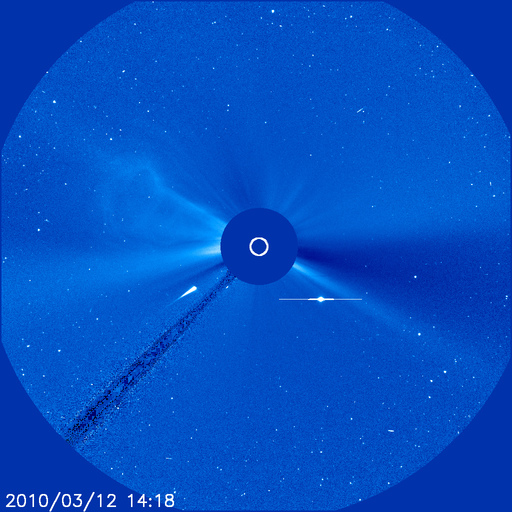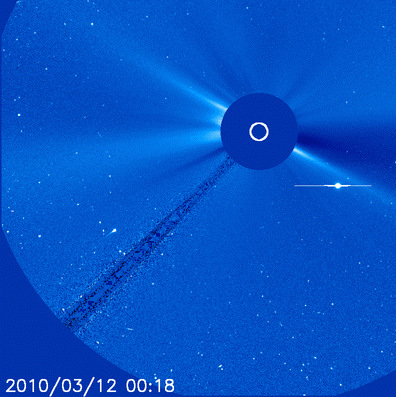A large object is now highly visible through various solar observing instruments and will likely crash into the sun within the next few hours. The body is currently assumed to be a Kruetz Sungrazer comet. The object first appeared on instruments only a few hours ago and is rapidly descending towards the sun.
The object’s dramatic increase in apparent size in the animation below is likely due to massive gas emissions caused by surface boiling and sublimation as the body, presumably an icy comet, nears the sun. The second large object in motion to the right of the sun is the planet Mercury. The solar impacter’s apparent size in earth-based images is already as large as Mercury’s, but this is probably an effect of the rapidly billowing gas envelop surrounding its cometary nucleus. The coma of large comets can swell to sizes larger than Jupiter and can even rival the sun’s diameter, although their masses remain comparatively infinitesimal.
The large occlusion disc in the center of the image is used to block the sun’s blinding light. The dark line emanating to the lower left of the disk is the shadow of a rod used to hold the disc in place. The inner white circle on the occlusion disc marks an outline of the sun’s position and size.
A coronal mass ejection (CME) is occurring in the animation on the left side of the sun. A poster to a popular message board correctly predicted the 8.8 earthquake in Chile based upon the impending impact of a CME on the earth.
Considering its beeline trajectory, it is highly likely that the current object will strike the plasma “surface” of the sun, but it is possible that the body will circle either in front of or behind the sun.
The consequence of the impending impact is unknown, but considering the apparent mass and speed of the impactor, the body’s plunge into the sun will likely spawn flares, sunspots and perhaps multiple CMEs.

